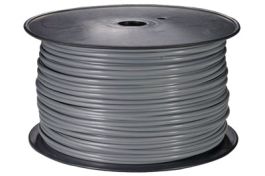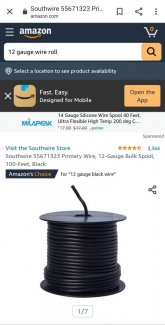As part of the electrically challenged, I have on hand 1000s of feet of 6 strand copper wire phone cable. I assume it is 18 Guage, it is heavy and difficult to bend short sections with my fingers.
If I strip the ends and twist them together on each end would they effectually become 12 Guage?
If that works how many amps would it carry. I would like to power circuits in my travel trailer.
If I strip the ends and twist them together on each end would they effectually become 12 Guage?
If that works how many amps would it carry. I would like to power circuits in my travel trailer.




